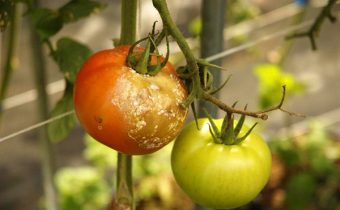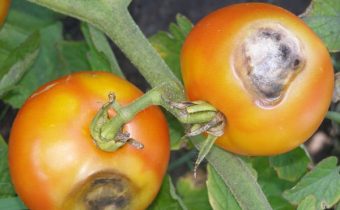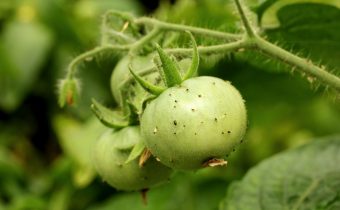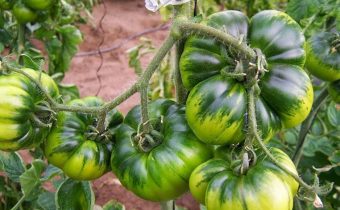Autumn preparation of the greenhouse for growing tomatoes
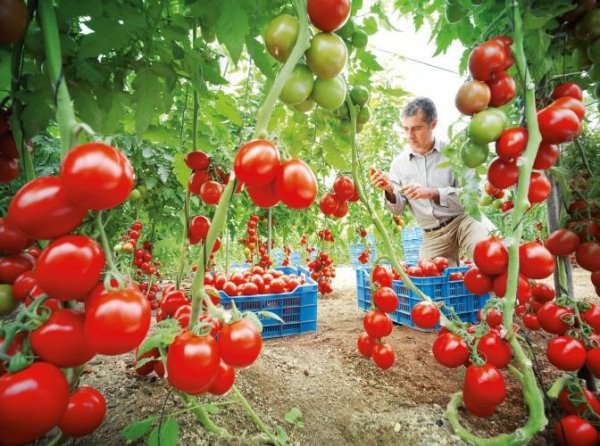
If it is decided to grow tomato culture in the next season, the preparation of the greenhouse in the fall for tomatoes should consist of:
- soil preparation;
- pest treatments;
- decontamination from pathogens;
Complex of events with greenhouse soils
 The yield of greenhouse tomatoes is several times higher than in the open, and accordingly it imposes special requirements for greenhouse soils. The application of increased doses of fertilizers, increased temperatures, cultivation intensity, abundance of irrigation and reusable mechanical treatments entail increased requirements for the implementation of agrotechnical conditions.
The yield of greenhouse tomatoes is several times higher than in the open, and accordingly it imposes special requirements for greenhouse soils. The application of increased doses of fertilizers, increased temperatures, cultivation intensity, abundance of irrigation and reusable mechanical treatments entail increased requirements for the implementation of agrotechnical conditions.
Soil preparation in the greenhouse in the fall for tomatoes depends on what type of technology you have chosen:
- Replaceable use of soil;
- Permanent use of soils.
If at the end of the fruiting season you rake out everything from the greenhouse, and in the spring you put the prepared soil mixture in advance in the fall, then the issues of pests and pathogens, as well as fertility, are decided cardinally.
In this case, after cleaning the territory, the greenhouse is treated with 1% solution of blue vitriol and opened for freezing during the winter. In the spring imported soil mixture.
See also: Which tomatoes are best planted in a polycarbonate greenhouse?
However, not all growers can afford this luxury and go according to the method of periodic replacement, partial or permanent. This imposes its own characteristics and the preparation of the soil in the fall under the tomatoes should be carried out more carefully.
Where to begin?
 Ideally, plant residues should be removed immediately after the end of the fruiting plant. However, in practice it is not always possible to do just that. Therefore, cleaning up all residues is the main task.
Ideally, plant residues should be removed immediately after the end of the fruiting plant. However, in practice it is not always possible to do just that. Therefore, cleaning up all residues is the main task.
If the change of soil does not include your plans, green manure for tomatoes in the fall must be sown without fail. The best sideratom, regardless of what grew in the greenhouse this year, is mustard. This culture will quickly grow, disinfect the soil and by the onset of strong frosts it can be safely put into the soil.
If cultures still linger in some places, there is nothing to worry about. It is enough to slightly loosen the soil and it will perfectly take mustard seeds. Shoots will appear quickly, and in a month the height of the plant will be sufficient to perform subsequent work.
Improving soil structure and nutrition
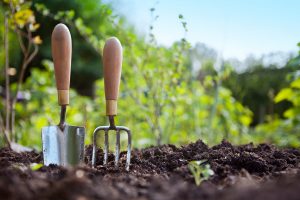 To preserve fertility, or even improve, it is necessary to constantly improve the structure of the soil, which will make it more air and permeable.
To preserve fertility, or even improve, it is necessary to constantly improve the structure of the soil, which will make it more air and permeable.
For this purpose it is best to use natural loosening materials in the form of sawdust and straw cutting. It is best of all that these materials are pre-composted, but the introduction of even fresh sawdust greatly facilitates the soil. In this case, the preparation of land for tomatoes in the fall will still consist in adding an additional amount of ammonium nitrate, which will saturate the loosening materials.
After mowing siderats, sawdust or straw chopping is scattered on the surface (bucket on m2), pre-watered with a solution of ammonium nitrate 2 tbsp. spoons on a bucket of water, oven ash (2 kg per m 2) and fresh compost or humus (1 bucket per m2).In this scenario, the question: "What kind of fertilizer to make under the tomatoes in the fall", should not arise.
See also: Tomato "Mazarin": characteristics and description of the variety, reviews
Disease prevention
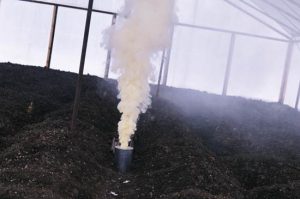 If crop rotation is alternately used with alternating major greenhouse crops over the entire area: pepper, cucumber, tomato, the occurrence of pests and diseases is very unlikely. However, the realities of life are such that vegetable growers try to grow all crops in one greenhouse in one season, and even condense them with radishes, spinach, and cilantro. As a result, the likelihood of late blight increases.
If crop rotation is alternately used with alternating major greenhouse crops over the entire area: pepper, cucumber, tomato, the occurrence of pests and diseases is very unlikely. However, the realities of life are such that vegetable growers try to grow all crops in one greenhouse in one season, and even condense them with radishes, spinach, and cilantro. As a result, the likelihood of late blight increases.
It is good if the fight against the pathogenic fungus started in early spring, then the dispute is much less. If time is lost, then you need to process everything and preferably twice. Primary processing should be carried out before sowing mustard. To do this, you can use time-tested 1% solution of copper sulfate.
The remaining tomato tops are burned in the fall, and the soil, frames, shelters are treated with a fungicide solution. After sowing, growing, cutting mustard and adding additional ingredients, before digging, it is still treated with a solution of fungicide.
Excellent results are shown by the use of sulfur checkers. Such processing of polycarbonate greenhouses from phytophtoras in the autumn will best affect the yield. Checkers are located around the perimeter of the building and set on fire, starting with the farthest. Then the room is sealed. The checker itself “works” for up to 10 minutes, but the exposure (time of hermetic closing of the room) must be sustained for 10 hours.
See also: Tomato varieties with photos and descriptions
Greenhouse disinfection - free from disease and pests
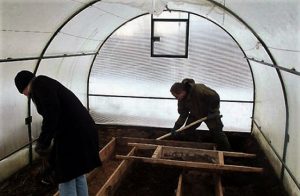 Whatever the microbiological background of the greenhouse, the treatment with a disinfectant is completely useless. If we have already figured out how to cultivate the ground after tomato phytophthora in the fall, then the following drugs will help us to fight other diseases of a viral and bacterial nature:
Whatever the microbiological background of the greenhouse, the treatment with a disinfectant is completely useless. If we have already figured out how to cultivate the ground after tomato phytophthora in the fall, then the following drugs will help us to fight other diseases of a viral and bacterial nature:
To do this, you can use:
- bleach at a rate of 350-400 g per bucket of water. Having prepared the drug, it is allowed to settle, and then the liquid fraction is drained, and the entire structure is sprayed with it, and the wooden structures are whitened with a brush. Provided that a spider mite raged in the greenhouse, the concentration was increased to 1 kg per bucket of water;
- Formalin solution 40%. When processing it is necessary to use a gas mask, since the formaldehyde released is sufficiently corrosive to the mucous membranes;
- Inkstone. This preparation in concentration of 5% can also be used for processing wooden surfaces of the greenhouse;
Treatment of the greenhouse in the fall against pests and diseases is a mandatory process, and it is not necessary to apply chemistry for this. Armed gardeners now have a number of effective drugs, such as:
- azotofid;
- phytocide;
- biodestructor stubble.
These preparations work only at a temperature above 12ᵒ С, therefore it is necessary to begin processing as soon as the harvest is finished. When the temperature decreases, the microorganisms working in these preparations will go to sleep and will resume their beneficial effect in the spring.
When preparing the greenhouse there are no processes that can be neglected. Conducting work regularly, systematically, in a timely manner pests and pathogens will not be able to master their niche, and will have to leave the territory.
There is another important point - falling asleep inside the greenhouse. If it is possible to open the top, then the snow will fill the space by itself, and the frost will help to bring the population of pests and pathogens to a minimum.


